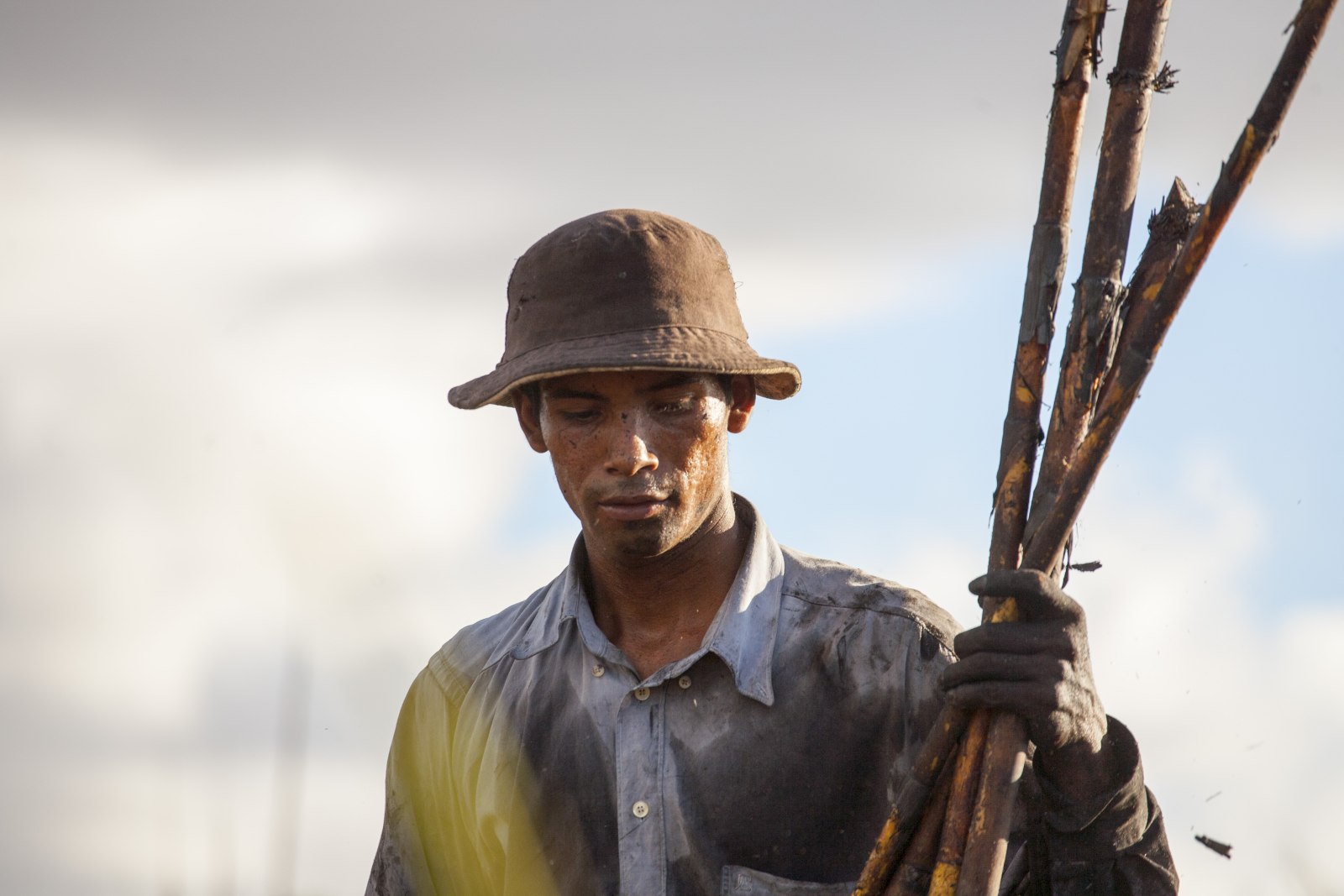
A recent study has reignited the debate surrounding the high incidence of death due to renal illness in Guanacaste, as there is apparently a connection between the use of the herbicide glyphosate – which is mainly used on sugarcane plantations and produced by Monsanto – and areas where arsenic and heavy metals are present in the groundwater.
Guanacaste is the province with the highest rate of Chronic Renal Failure (CRF) in the country. According to data from the Costa Rican Social Security Fund (CCSS), CRF affects 113 people out of every 100,000. That is almost triple the number of people affected in Cartago, which ranks second with 43.8 people affected out of every 100,000.
Dr. Roy Wong McClure, chief of the CCSS’s sub-department of epidemiological surveillance, confirmed to The Voice of Guanacaste that “the presence of chronic renal failure in the province of Guanacaste is aggressive and has the highest mortality rate and most instances of premature forms compared to the rest of the provinces.”
The illness is afflicting thousands of people in rural agricultural communities on the Pacific coasts of Nicaragua, El Salvador and Costa Rica, as well as Sri Lanka and India. More than 16,000 men have died from CRF in Central America between 2005 and 2009, according to World Health Organization (WHO) data.
For example, the town of Chichigalpa in Nicaragua has been dubbed the Island of Widows, as one in every three men, the majority of whom are laborers on sugarcane plantations, suffer and eventually die from CRF, according to several reports by media and the La Isla Foundation, headquartered in Leon, Nicaragua.
Jennier Crowe, an investigator for the Health, Work and Environment Program (SALTRA – Salud, Trabajo y Ambiente) of the Regional Institute of Studies on Toxic Substances (IRET – Instituto Regional de Estudios en Sustancias Toxicas) at the National University (UNA – Universidad Nacional), said that in Costa Rica just as much as in other countries in Central America, CRF has been identified more often in sugarcane workers, but that “is not to say that it is not present among other groups.”
In Central American countries, the problem has several aspects in common. The majority of those affected are young agricultural workers who experience strange damage to their kidneys that is consistent with severe dehydration and toxic contamination. The youths do heavy manual labor, have little formal education, lack easy access to medical care and live in extremely fertile and hot areas, where pesticides are used intensively and groundwater is consumed.
According to Crowe, seeing the evidence that exists in Central America, there are several strong hypotheses and it is almost certain that the sickness could be caused by a combination of factors. The most likely, Crowe specified, are “chronic dehydration, in very hot conditions, possibly with exposure to some kind of environmental pollution. It could be agrochemical; it could be a heavy metal; it could be something not yet identified.”
Heavy metals are those chemical elements that have a specific weight above four grams per cubic centimeter. They include cobalt, copper, iron, manganese, molybdenum, vanadium, strontium, lead, mercury, nickel and zinc. What makes them toxic are their high concentrations in water.
Guanacaste Communities Affected
Maria Cecilia Quesada Guerrero, a resident of downtown Cañas since 1992, told The Voice of Guanacaste that since sometime around 2010, they began to notice that more people in the community died from kidney-related illnesses, especially in the area of Bebedero.
“There are a lot of factors, we believe – that people aren’t drinking enough water, that many people are working in the sun, the problems with the ozone layer, that before they didn’t use as many insecticides as now; it’s not just the arsenic in the water,” said Quesada.
She, for example, has been buying water in drums for more than a year because she said she doesn’t believe authorities when they state that the water in downtown Cañas isn’t contaminated by arsenic. “How much are all these treatments and sicknesses costing the CCSS because the government doesn’t want to solve the water contamination [problem]?” asked Quesada.
Sonia – who preferred not to give her real name – lives in Montenegro and works seasonally in the cotton fields in Cañas, harvesting and planting along with several other women. They work shifts from 5:30 a.m. to 1:30 p.m. Her husband, who was Nicaraguan, died five years ago due to kidney damage. According to Sonia, he worked on a banana plantation in Guapiles and a melon farm in Guanacaste. He never went to the doctor until he started to feel bad at work one day. They took him to the hospital and he was diagnosed with renal failure.
“Yes, there was the possibility of a transplant. He was admitted to the hospital in Liberia and he was going to appointments in San Jose, to a kidney specialist, but when his family finally decided to donate the kidney, it was better not to, because then it was late,” said Sonia, holding back her emotions.
Currently, Sonia lives with her son, and the water available at their home contains arsenic. “I mean, everyone is scared; this scares us,” she said.
Just like many residents, Sonia received a barrel to filter water. She doesn’t use it because she says she didn’t have time to maintain it. Instead, every two days she goes to the town’s well and collects water in a drum to use for cooking and drinking. When asked if she thinks the water is safe, she said, “That’s what they’ve told us – that yes, you can drink it.”
Parallels Between Sri Lanka and Costa Rica
Recently, in February of 2014, a study was published that tied the high incidence of CRF to the use of glyphosate herbicide and the consumption of water with heavy metals. The article, published in the International Journal of Environmental Research and Public Health, found several parallels between what is happening in Sri Lanka and what is happening in Costa Rica.
The article is titled, “Glyphosate, Hard Water and Nephrotoxic Metals: Are They the Culprits Behind the Epidemic of Chronic Kidney Disease of Unknown Etiology in Sri Lanka?” It shows that there is a consensus that the primary factors that cause CRF include “exposure to arsenic, cadmium and pesticides.”
The scientific explication is that when glyphosate combines with certain environmental factors and heavy metals, it can destroy the renal tissue in thousands of agricultural workers. According to the article, glyphosate is absorbed into the ground, filters through to groundwater and in that way contaminates potable water sources. It can also be ingested through the skin or respiratory tract of the workers who are applying it to crops.
Some 96% of CRF patients in Sri Lanka had consumed water with heavy metals for at least five years, from wells supplied by surface aquifers, the article affirms. The characteristics of CRF in Sri Lanka and Costa Rica are similar in that the disease is more common in areas where sugarcane is grown and where cotton was previously planted. Both sugarcane and rice require a large volume of agrochemicals for large scale production.
“The Pacific area of Central America has a volcanic origin, and here the ground and groundwater contain high volumes of metals and arsenic,” the report says. But the article also explains that in addition, arsenic can be added in part by fertilizers and herbicides used in cotton production.
In Costa Rica, the Costa Rican Institute of Aqueducts and Sewers (AyA – Instituto Costarricense de Acueductos y Alcantarillados) has been studying water quality in the area between Cañas and Bagaces (both in Guanacaste) since 2009. The studies have shown arsenic levels above the standard set by WHO, which is 10 micrograms per liter, in the communities of Hotel de Cañas, Agua Caliente and Montenegro of Bagaces, and various other nearby towns.
Glyphosate, the Most Popular Herbicide
According to the article, when sugarcane became the main crop on the Pacific coast of Central America starting in the 90s, it is probable that large quantities of glyphosate and pesticides were used, and that is how it could have accumulated in the ground and groundwater.
Glyphosate is currently the most used herbicide, both in Costa Rica and worldwide, and it is used “on resistant, genetically-modified crops, as a maturing agent on sugarcane.” Between 1977 and 2006 Costa Rica imported 12,771 tons of the active ingredient of glyphosate, representing 24.14% of all herbicides imported that year, according to IRET, the UNA program.
Glyphosate is the main active ingredient in the herbicide Roundup, which is produced by Monsanto. According to the corporation, it has been demonstrated that glyphosate does not have negative effects on animals (mammals, birds), micro fauna (arthropods), nor on human health and that it doesn’t adversely impact the environment when it is correctly used for the purposes on its label. “Currently not one serious scientific study exists in the world that questions or invalidates any of the many studies done on glyphosate that support its characteristics and properties,” said Monsanto in a publication on its web page.Research Recently Underway
Although studies still do not exist in Costa Rica regarding exposure to contaminated water and CRF, Dr. Catharina Wesseling, in collaboration with international researchers, is studying mortality data for CRF, comparing Guanacaste with other provinces and comparing the different cantons of Guanacaste.
The CCSS, for its part, started a study in August of 2012 of the factors associated with CRF in Cañas, Bagaces, Liberia, La Cruz, Santa Cruz, Nicoya, Carrillo and Nandayure. Doctor Wong said that it is hoped the study will be ready in November of this year.
Various researches and health workers that have been following the subject insist that the most serious aspect is that the sickness could be preventable.
Crowe indicated that, regardless of a person’s job and the cause of the illness, it is known that a person in the first stages of renal failure or those who live among a population susceptible to the disease should do what they can to protect their kidneys.







Comments